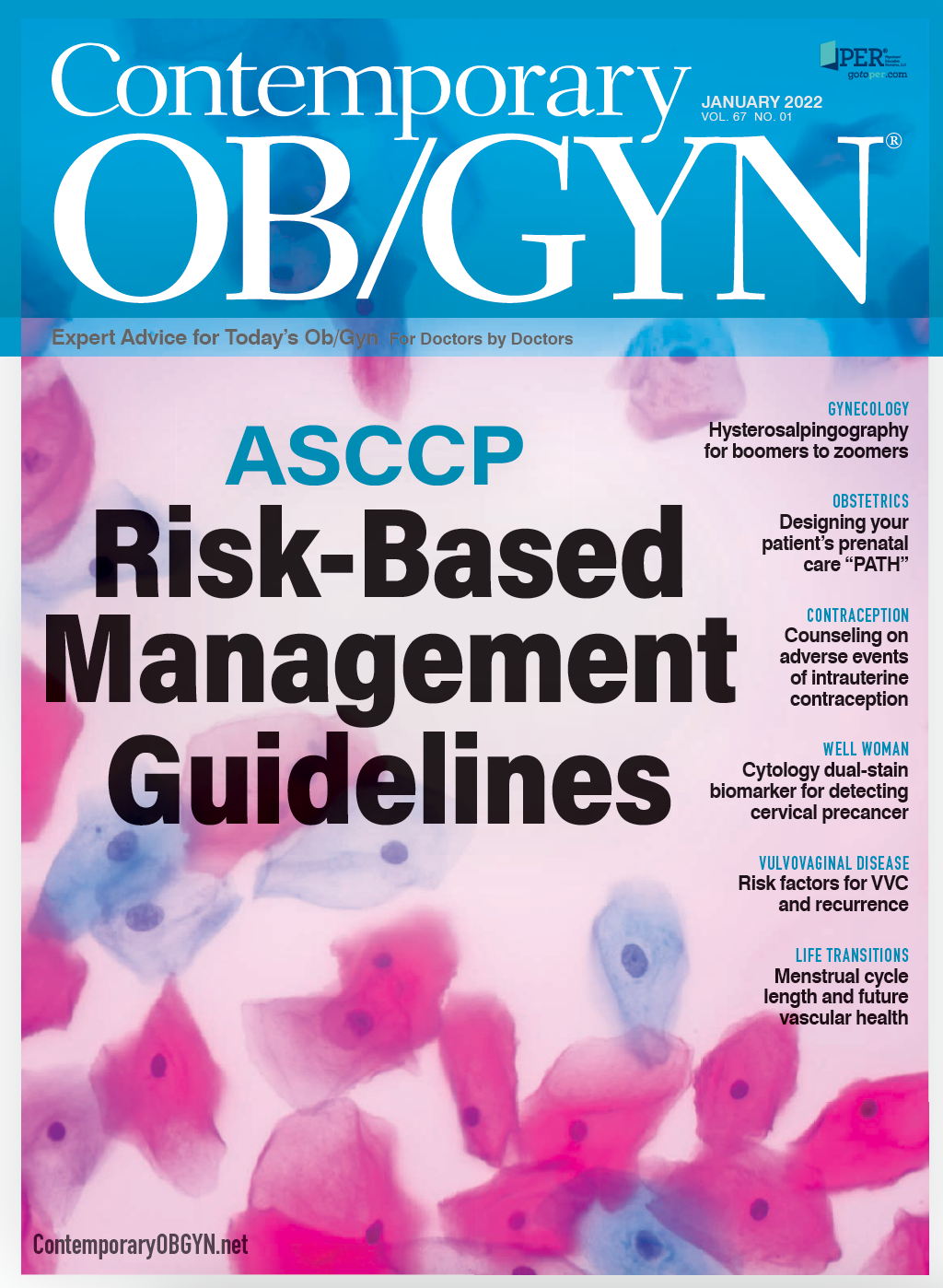Menstrual cycle length affects future vascular health
According to a recent study, women who experience stable menstrual cycles during the menopause transition have a significantly higher cardiovascular disease (CVD) risk later in life than those who have a late increase in cycle length.
Women who experience stable menstrual cycles during the menopause transition have a significantly higher cardiovascular disease (CVD) risk later in life than those who have a late increase in cycle length, according to a study in the journal Menopause.1
“The menopause transition is a period where women face multiple changes, including changes in their menstrual cycle,” said lead author Samar R. El Khoudary, PhD, MPH, BPharm, FAHA, associate professor of epidemiology at the University of Pittsburgh Graduate School of Public Health in Pennsylvania. “Changes in menstrual cycle length are linked with hormone levels, and hormones can influence cardiovascular disease risk.”
Previous studies in reproductive women have shown a link between menstrual cycle irregularity and health conditions, according to El Khoudary. “However, a similar association had not been assessed in women transitioning through menopause,” she said.
Investigators sought to characterize trajectories of menstrual cycle length over the menopause transition and test whether these trajectories are connected to postmenopausal markers of subclinical atherosclerosis.
A total of 428 women from the Daily Hormone Study, a substudy of the Study of Women’s Health Across the Nation, were assessed, representing 1808 cycles over the menopause transition. Three distinct trajectories of cycle length were identified: stable (no changes in cycle length over the menopause transition [62.1% of women]), late increase (2 years before the final menstrual period [21.8% of women]), and early increase (5 years before the final menstrual period [16.2% of women]).
After accounting for race, concurrent age, socioeconomic status, physical activity level, and premenopausal CVD risk profile, women with the late increase pattern had significantly lower postmenopausal carotid intima-media thickness and brachial-ankle pulse wave velocity levels than the stable group: 0.72 mm and 1392 cm/s vs 0.77 mm and 1508 cm/s, respectively.
“The trajectory of menstrual cycle length change during the menopause transition seems to be a marker of vascular health,” El Khoudary told Contemporary OB/GYN®. “This is important because it shows that we cannot lump women together in 1 group. They experience different changes to their cycle during the menopause transition. Measuring these changes could be a simple way to predict who might be at risk of cardiovascular disease in the future.”
However, El Khoudary and her colleagues were surprised that most women in the study had stable cycles during the menopause transition. It was also unexpected that these women had a higher risk of CVD than those who experienced a late increase in cycle length.
“Other studies have found that young women with frequent short cycles have better cardiovascular health, pointing to estrogen as protective for the heart in this age group,” El Khoudary said. “But we found that women in the late increase group had better measures of vascular health than those in the stable group, suggesting that estrogen may not be as protective later in life.”
El Khoudary noted that early menopause and frequent vasomotor symptoms are associated with greater CVD risk. “Our research adds patterns of changes in cycle length as a new menopause-related characteristic that could identify women at greater risk of CVD,” she said. “Therefore, doctors should consider menopause-related factors as a constellation when evaluating midlife women.”
The menopause transition is an impactful period for cardiovascular health, so women and their health care providers should advocate for a heart-healthy lifestyle as early as possible, according to El Khoudary.
The authors plan to measure hormone levels in women throughout the menopause transition to test their hypothesis that menstrual cycle changes reflect estrogen levels during the menopause transition, which influences cardiovascular health.
“Previously, we found that accumulation of abdominal fat during menopause was a risk factor for cardiovascular disease, so we want to examine [whether] menstrual cycle trajectories are linked with this and other risk factors,” El Khoudary said.
Reference:
1. El Khoudary SR, Qi M, Chen X, et al. Patterns of menstrual cycle length over the menopause transition are associated with subclinical atherosclerosis after menopause. Menopause. 2021;10.1097/GME.0000000000001876. doi:10.1097/GME.0000000000001876

Elinzanetant's efficacy for vasomotor symptoms confirmed in phase 3 trial
March 19th 2024Bayer's OASIS 3 trial affirmsed the safety and efficacy of elinzanetant in reducing moderate to severe vasomotor symptoms, bolstering confidence in its potential as a non-hormonal solution for menopause-related issues.
Read More
